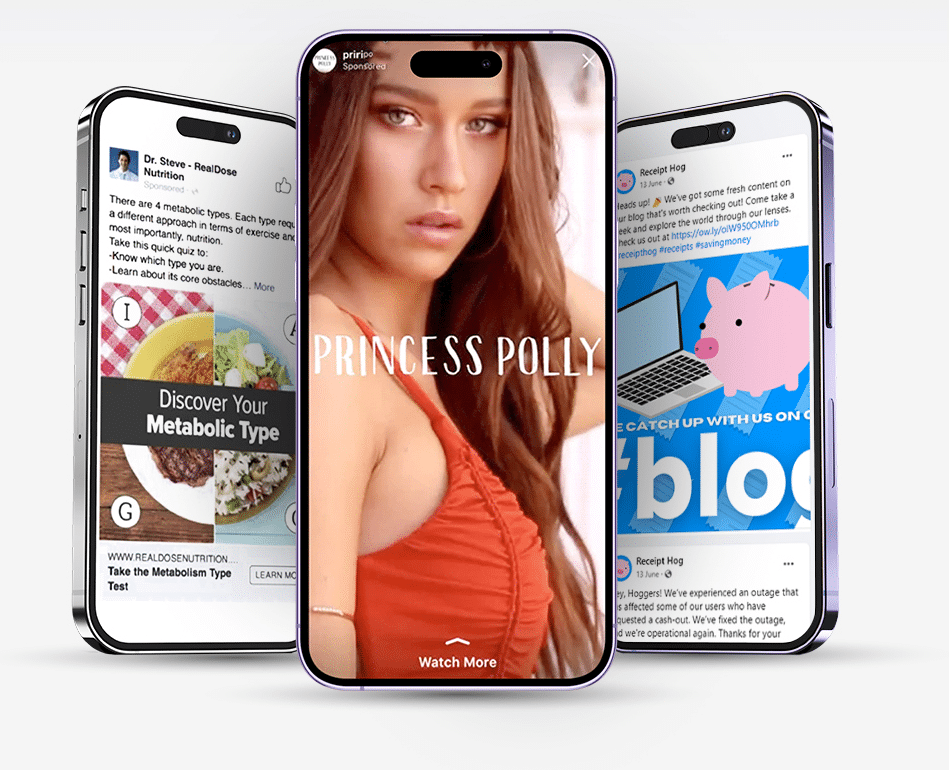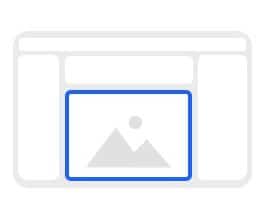Grow your business with YouTube Advertising
Increase your revenue and scale your business with AdvertiseMint, the trusted YouTube advertising agency!

Grow your business with Facebook, Instagram & TikTok advertising. Let's talk 844-236-4686.
Increase your revenue and scale your business with AdvertiseMint, the trusted YouTube advertising agency!


When it comes to running Youtube ads, our Youtube marketing experts know how to make your business profitable. Increase your revenue and scale your business with AdvertiseMint, the trusted Youtube advertising agency!
Here are the top three reasons why you need
to advertise on YouTube today
It’s Smart!
It’s Mobile!
Demographics
Target users according to their age, gender, parental status, or household income.
Interests
Target users already interested in certain topics, users that are more tailored to your brand, users that like products and services similar to yours, and life events.
Video Remarketing
Target users that interacted with your videos in the past.
Placements
Target channels, videos, apps, websites, and placements within those websites.
Topics
Target specific topics on YouTube and the Display Network.
Keywords
Target specific keywords related to a YouTube video, YouTube channel, or website.
Updated: July 4, 2025
Can you guarantee my YouTube ads will be profitable?
The answer is simple
The only guarantee is that YouTube will show your ads and take your money.
The rest is all a game. Constantly moving. Constantly adapting.
New Algorithms. New Competitors. New Challenges.
Its like a casino, and the house was built to win.
So how can your business grow?
Come closer! We’ll tell you how!
You need a guide. An expert. A team of experts.
Experts who navigate the YouTube ads jungle all day, every day.
Experts that constantly produce results.
They combine knowledge and data with creativity.
They know what works. They know how to scale.
They will outwork anyone to get results.
And guess what…

YouTube advertising is a powerful digital marketing strategy that allows businesses to reach a vast audience through video-based advertisements. With over two billion monthly logged-in users, YouTube provides an extensive platform for showcasing products, services, and brand messages.
Youtube advertising offers various ad formats, such as in-stream ads, video discovery ads, bumper ads, etc. each designed to capture viewers’ attention and engage them effectively. By leveraging YouTube’s advanced targeting options, advertisers can narrow down their audience based on demographics, interests, behaviors, and remarketing lists.
YouTube ads offer the flexibility to integrate with Google Ads, enabling seamless campaign management and leveraging the comprehensive Google advertising ecosystem. With the ability to measure ad performance, engage viewers through storytelling, and drive user actions through compelling calls-to-action, YouTube advertising has emerged as a valuable tool for businesses aiming to boost brand awareness, engagement, and conversions in today’s digital landscape.


YouTube ads can be an invaluable addition to your business’s marketing strategy. With billions of monthly logged-in viewers, the platform offers unparalleled reach and access to a diverse audience. Its array of ad formats, including in-stream, discovery, and bumper ads, cater to various advertising goals and audience preferences
By using advanced targeting options, such as demographics, interests, behaviors, and remarketing lists, you can precisely reach your desired customer base. Moreover, YouTube’s integration with Google Ads enhances campaign management and expands your advertising reach.
The platform’s ability to measure ad performance, engage viewers through compelling storytelling, and drive desired actions makes it a powerful tool for boosting brand awareness, engagement, and conversions. Incorporating YouTube ads into your marketing mix can effectively showcase your products or services, amplify your online presence, and drive business growth in today’s digital landscape.
The cost of YouTube advertising varies based on several factors. YouTube operates on an auction-based system, where advertisers bid for ad placements and pay based on the ad format and targeting options selected.
The pricing model can differ between ad formats, including cost-per-view (CPV) for in-stream ads or cost-per-click (CPC) for video discovery ads. Advertisers have control over their budget and can set daily or campaign-level spending limits. The actual cost per view or click depends on the level of competition for your target audience, the quality of your ad content, and the targeting options chosen.
YouTube advertising allows businesses of all sizes to tailor their spending to fit their budget, making it a flexible and scalable advertising option. By monitoring performance metrics and optimizing campaigns, businesses can achieve a balance between cost and desired results, ensuring a cost-effective investment in YouTube advertising.

people on YouTube every month.
YouTube is available in over 100 countries and 80 languages.
Videos are watched on YouTube every day.
hours of video watched on YouTube every day.
YouTube is the second most visited website in the world, after Google.
Average time spent on YouTube by all users.
Find new customers and deepen relationships with people who will click through and buy.
Generate excitement and maintain momentum around a new product or service.
With guaranteed reach and frequency, you’ll ensure your potential customers are seeing your brand messaging on a consistent basis.
Find your ideal prospects and present them with compelling offers or info about your business in exchange for their contact information.
Make sure your videos or commercials are seen by your target audience.
You can target audiences within a wide range of consumer attributes like demographics, interests, behaviors and custom audiences.
Promote your app in Google Play to the correct audience and use YouTube ads to keep them engaged with your app.
Reach customers on their mobile phone who are located near your location to increase foot traffic and sales from your business.
Reach an extremely targeted audience of business decision makers or individuals in specific roles or companies.
Promote your business by going LIVE to your community on YouTube.
We have worked with AdvertiseMint for over a year, and I am grateful to have them as our Facebook advertising agency. They are very knowledgeable about Facebook, and they’re always fast to implement our requests. We have worked with them on sponsored posts, direct response, and dynamic product ads. They have always fought to get us a positive ROI.
– Jim, California
To execute a successful YouTube marketing campaign, it’s crucial to build a well-structured content plan. A robust content plan includes a mix of informative and educational videos, engaging storytelling, product demonstrations, customer testimonials, and industry insights.
Engaging with your audience is a vital strategy for successful YouTube marketing. By actively connecting with viewers, businesses can build strong relationships and foster a sense of community. Incorporate polls, Q&A sessions, or contests within your content to get viewers’ feedback.
Conducting thorough research on your competition is a crucial strategy in YouTube marketing. By analyzing and understanding your competitors, you can gain valuable insights and leverage them to your advantage.By studying their strengths and weaknesses, you can identify opportunities to differentiate yourself and tailor your content to stand out.
Engaging a YouTube ads agency can offer several benefits for your business. Here are a few reasons why you might consider working with AdvertiseMint as your YouTube ads agency:
Advanced Knowledge – From day one, you are accessing the collective knowledge of the agency experts and all the campaigns they have run in the past. This means avoiding costly mistakes someone less experienced may repeat.
Dedicated Support – As an agency, we have direct access with the Youtube team to quickly solve critical performance issues, optimize existing ad performance, and access new features and tools to help you increase results ahead of your competition.
Reduced Cost – Utilizing the agency model allows your business access to multiple experts at a fraction of the cost for full-time individuals to complete the same work.
Strategic Planning and Optimization: A YouTube ads agency can develop a comprehensive strategy for your ad campaigns, taking into account your goals, budget, and target audience. They can optimize your campaigns by testing different variations, refining targeting parameters, and analyzing data to continually improve performance and maximize ROI.
Creative Content Development: YouTube ads agencies often have a team of skilled professionals who can create compelling and visually appealing ad content. They understand how to craft engaging narratives, incorporate strong calls to action, and produce high-quality videos that capture viewers’ attention and drive desired actions.
The world of advertising is changing faster than ever now, with new advertising platforms and opportunities becoming available all the time.
Improve your Youtube ads with comprehensive growth strategies and expert management. Our team provides a custom combination of Youtube services specifically tailored for your needs.
Our mission is to create the world’s most profitable ads. The AdvertiseMint accomplishes this with experts who specialize in Youtube advertising ensuring your ads will be shown to the right audience, at the right time for the right price. Our job is to ensure this happens consistently and that the performance of your Youtube ads are meeting your expectations. Our team uses a combination of elite individuals in media buying and creative, along with the latest technology in artificial intelligence and machine learning to ensure your ads are generating the results that matter for your business.
AdvertiseMint uses the ETP Method to provide superior results for our clients vs our competitors. The ETP Method combines the three things that are essential with all advertising.
ELITE: We have created a team that brings their elite skills to their industry. We’re talking elite media buyers, elite copywriters, elite video creators, editors and elite talent. Elite means an individual is dedicated to the process of becoming the best, which means they are knowledgeable but always learning, certified and have a track record of winning. Advertising is a team sport and we want you to have an All-Star team.
TECHNOLOGY: We embrace the new technology that is constantly improving advertising. This means selecting the best ad platforms, utilizing advanced features and latest tools in artificial intelligence and machine learning to create better ads, faster and more efficient than ever before.
PERFORMANCE: Results are all the matter in Advertising and the end result of elite individuals using the latest in technology. The end result of everything we do. If the right people are using the right tools and analyzing the right data, the performance will speak for itself.
If you are committed towards growing your business and looking for an Advertising Partner, we’d love to talk with you.
I work for a global brand with over 1.5 million followers. With that many followers, you would think we would have all our social media in order. Nope! We found AdvertiseMint online after searching for a Facebook marketing and advertising agency. We had a problem with our fan page verification, but, within a few hours, they had it resolved, and the verified icon was added to our site. Thanks!
– Maricia, California
YouTube is a popular video-sharing platform that allows users to upload, view, and share videos. It has become a massive online community where people can discover, engage with, and be entertained by a wide variety of content. YouTube’s extensive user base and reach make it an incredibly powerful platform for marketing purposes. Here’s why you should consider using YouTube for marketing:
These reasons make YouTube an invaluable platform for marketing, helping you to connect with your target audience in a compelling and impactful way.
Setting up YouTube ads involves several steps to ensure your campaign is effectively targeted and optimized. Here’s a guide on how to set up YouTube ads:
There are two ways to login to YouTube Ads:
Once you have logged in to YouTube Ads, you will be able to create and manage your YouTube ad campaigns.
The cost of YouTube advertising varies depending on a number of factors, including:
To get a better understanding of the potential costs, it’s advisable to research industry benchmarks, consult with a digital marketing agency like AdvertiseMint, or test small-scale campaigns to gather data and optimize your advertising strategy accordingly.
YouTube offers several advertising objectives that align with different marketing goals. These objectives help you define the purpose of your YouTube ad campaigns and optimize them for specific outcomes. Here are the primary objectives available in YouTube advertising:
When choosing an objective for your YouTube advertising campaign, it is important to consider your overall marketing goals.
YouTube advertising has specific creative specifications to ensure that your ads are displayed correctly and meet the platform’s guidelines. Here are the general video ad specifications for YouTube advertising:
In-Stream Ads:
Video Discovery Ads:
Bumper Ads
Display Ads
Companion Banners (for in-stream ads):
Overlay Ads
Skippable Video Ads (TrueView)
It’s essential to follow these creative specifications to ensure that your ads are compatible with YouTube ad platform. It is also recommended to refer to YouTube’s official guidelines and documentation for the most up-to-date information on creative specifications.
YouTube offers several types of ads that cater to different marketing goals and audience engagement. Here are the primary types of YouTube ads:
YouTube has specific ad policies in place to ensure a safe and appropriate advertising environment for users. Advertisers must adhere to these policies when creating and running ads on the platform. Here are some key ad policies for YouTube advertising:
If an ad violates any of YouTube’s ad policies, it may be rejected or removed from the platform. It’s important to note that these ad policies may evolve over time, and it’s advisable to review YouTube’s official rules and policies for the most up-to-date information.
Yes, YouTube Advertising has a pixel called the YouTube Conversion Tracking Pixel. This pixel allows advertisers to track the performance of their YouTube ads and measure their impact on website conversions.
The YouTube Conversion Tracking Pixel is a small piece of code that is added to your website. When a user visits your website and interacts with your ad, the pixel will fire and send data back to Google Analytics. This data can be used to track the number of conversions that were generated by your YouTube ads, as well as the value of those conversions.
To set up the YouTube Conversion Tracking Pixel, you will need to create a Google Analytics account and add the pixel to your website. You can find instructions on how to do this in the Google Analytics documentation.
Once the pixel is set up, you can start tracking the performance of your YouTube ads. You can view the data in Google Analytics by going to Behavior > Conversions > Goals.
The YouTube Conversion Tracking Pixel is a powerful tool that can help you track the performance of your YouTube ads and measure their impact on website conversions. By using the pixel, you can get a better understanding of how your ads are performing and make necessary adjustments to your campaigns.
To view successful YouTube ads, you can utilize various tools and methods to gather data and insights. Here are some approaches you can take:
Remember that success can be measured based on different criteria, such as views, engagement, conversions, brand awareness, or return on investment (ROI). So consider your specific campaign goals and objectives when evaluating the success of your YouTube ads.
YouTube advertising has many pros and cons. Here are some of the most important ones:
Pros
Cons
It is essential to consider these pros and cons in the context of your specific business goals, target audience, and available resources
YouTube advertising offers several valuable benefits that can contribute to the success of your marketing efforts. Here are some key aspects that highlight the value of YouTube advertising:
By leveraging the platform’s features and implementing effective strategies, YouTube advertising can deliver significant value in terms of brand visibility, engagement, and driving results.
To maximize the effectiveness of your YouTube advertising campaigns, it’s important to follow best practices that help you create engaging and impactful ads. Here are some key best practices for YouTube advertising:
By implementing these best practices, you can create compelling, targeted, and effective YouTube ads that capture viewers’ attention, engage your audience, and drive desired actions. Also, you can read YouTube’s official guidelines for advertising best practices.
Both platforms are fantastic options for watching videos and offer unique features and advantages that can align differently with your specific advertising needs. Here’s a comparison to help you assess which platform may be more suitable for your advertising efforts:
YouTube Advertising
TikTok Advertising
It may be beneficial to consider conducting market research, analyzing your target audience’s preferences, and testing small-scale campaigns on both platforms to assess their effectiveness and suitability for your advertising objectives.
The YouTube ads algorithm utilizes a combination of factors to determine which ads to display to users. While the exact details of the algorithm are proprietary and not publicly disclosed, here are some key components that likely contribute to how the YouTube ads algorithm works:
YouTube ads algorithm continuously learns and adapts based on user feedback and data. As users engage with ads and provide feedback, the algorithm can refine its understanding of user preferences and optimize ad delivery over time.
Creating an effective YouTube marketing strategy involves careful planning and execution. Here are the steps to help you develop a successful strategy:
By following these steps and continuously refining your approach based on data and audience feedback, you can create an effective YouTube marketing strategy that drives results, builds brand awareness, and fosters audience engagement.
Targeting the right audience on YouTube ads is crucial in maximizing the effectiveness and efficiency of your ad campaigns. Here are some steps to help you target the right audience:
By combining these targeting methods, you can ensure that your YouTube ads are seen by the right people at the right time.
Here are some tips for creating effective YouTube ads:
By following these recommendations, you can create effective YouTube ads that reach your target audience and achieve your marketing goals.
To measure the success of your YouTube ads and evaluate their performance, you can utilize various metrics and analytics tools. Here’s how you can effectively measure the success of your YouTube ads:
Adjust your targeting, messaging, and creative elements based on the data and insights gained, and continue to refine your ad strategy to optimize results and achieve your marketing goals.
Optimizing your YouTube ads for maximum return on investment (ROI) involves continuous monitoring, analysis, and refinement. Here are some strategies to help you optimize your YouTube ads for better ROI:
By implementing these optimization strategies, continuously analyzing data, and refining your YouTube ad campaigns, you can improve your ROI and achieve better results from your advertising efforts.
AdvertiseMint is a full service advertising agency that specializes in performance. This means all aspects of our team are focused around growing your business and increasing your sales, leads or app installs. AdvertiseMint was founded in 2014 and has been featured on Inc., Forbes, Entrepreneur and Newsweek. Our team has worked for fortune 500 companies such as CocaCola and Newegg along with helping start-ups generate their first customer. If you are looking for help with your advertising. We would love to talk.
The AdvertiseMint HQ is located in Hollywood, California, however after covid, we enabled our advertising and creative experts to work remotely from all over the United States. This allows for an improved work/life balance with our team and thus, improved performance. While our team members may not always be in the same office, we utilize the latest tools for virtual meetings, digital collaborations and AI to ensure we’re completing our work efficiently so performance continues to increase.
We’re passionate about performance and want to grow your business. To accomplish this, we focus on three main elements. The first is hiring Elite individuals, these are media buyers and creative individuals that are striving everyday to be the best in their fields. The second is Technology, we utilize the latest in AI or machine learning tools to help get better results faster. The third is performance, if we have the right talent using the right tools, performance will increase and your company will thrive.
AdvertiseMint has been a leading advertising agency for the past 10 years. With over $500M in ad spend managed, our team has helped hundreds of companies increase sales and grow their business. We realize your business is unique and requires a custom approach towards your audience, advertising and analytics.
AdvertiseMint charges an agency rate based on a percentage of ad spend. Our pricing is transparent and is the same for all our clients. You can view AdvertiseMint pricing online. The agency rate ranges from 25% to 5% of the total monthly ad spend that AdvertiseMint managers for you. Our minimum budget requirement is $10,000 per month spent on advertising. There is no limit on the number of ad platforms you can run ads on. This amount covers certified media buyers, video editors and graphic designers to help ensure your results are increasing. Any customized projects or deliverables are billed at $150/hour.
When you sign up with AdvertiseMint, the first seven days is for onboarding. This is where the team will review your business information, competitors, branding, creative guidelines and perform an account audit for each advertising platform. The team will set up an initial onboarding call and then select a time to meet each week to review results and discuss what’s next. Each month, you’ll receive a custom report detailing progress.
We believe AdvertiseMint is the best Facebook ad agency to help grow your business. The AdvertiseMint team is dedicated to being elite at both media buying and creatives. We strive to be leaders in our industry, staying on top of the latest tools, features and systems that can help improve results. One of the biggest differences between AdvertiseMint and other ad agencies is we value every dollar that is spent on ads. We understand that each dollar matters when it comes to advertising and that everything must be measured by performance and if something isn’t working.
When you are reviewing agencies, you should consider the following elements – Leadership of the agency, expertise in the desired ad platforms or media placements, team size and location, along with cost structure.
AdvertiseMint guarantees that we’ll continue to work until your results are met. However, while AdvertiseMint would love to offer guarantees on advertising, it simply is not possible. There are many moving components with ad platforms that involve algorithms, technology and elements that we simply do not control or have access to.
When you sign up with AdvertiseMint, the team will set up weekly or bi-weekly calls with you to review performance and discuss the next steps with your campaigns. The team will also send over monthly reports discussing trends, analytics and elements causing performance to increase or decrease, along with our suggestions for moving forward.
AdvertiseMint uses a technology stack that includes the ad platforms and third party tools like Google’s Looker Studio. Our goal is to build any reports needed to ensure we can understand the changes in the campaign performance and how to continually optimize it.
The world of advertising moves very fast. The way we stay on top of things is by having a team of elite individuals that are dedicated towards being the best at what they do. This means they are consistently learning and monitoring their industry to stay a step ahead of the competitors. This consistent desire to learn keeps them on the forefront and then new features or strategies are discussed in our daily team meetings.
The top strategies we use is to follow the performance and focus on the elements that will make the biggest impact. This breaks down to two areas. Media buying and ad creatives. It’s essential that ads are shown to the correct audience and with the correct campaign structure. Ad creatives are also becoming more essential than ever. It’s important to have a consistent stream of unique content going to your consumers.
Here are our top picks for best Facebook ad agencies.
AdvertiseMint requires a 3 month commitment to begin. This gives us the time needed to get up to speed with existing ad account structure and begin building out a strategy that improves results. After the 3 months are up, the contract is renewed on a month-to-month basis. We believe this approach allows you the flexibility to always do what’s best for your business. Our job is to make you money and if we’re successful, we believe we’ll work together for a long time.
Increase foot traffic and make it easier for people to find and share information about your business.
Generate excitement and maintain momentum around a new product or service.
Get your app into the hands of the right people and keep them engaged.
Find your ideal prospects and present them with compelling offers or info about your business.
Make sure your videos or commercials are seen by your target audience.
Find new customers and deepen relationships with people who will click through and buy.

Appears on YouTube watch pages and on videos on partner sites and apps in the display Network. Plays before, during, and after videos.

Appearing as a thumbnail image, they appear on search results, alongside YouTube videos, and on the YouTube mobile homepage. Great for product and brand consideration.

An unskippable ad, Bumper ads are less than 6 seconds long and plays before, during, and after a video. They appear on YouTube videos, videos on partner sites, and apps on the Display Network. Great for brand awareness and reach.

Facebook allows you to upload and promote videos towards targeted users using mobile or desktop devices.
You will be assigned a dedicated account manager to oversee your account.
We’ll edit any images or create new ones to help captivate your audience.
We’ll test your targeting, ad copy and images to ensure you’re getting the best ROI.
We’ll help you reach users on Facebook that visited your site in the past.
We’ll add captions to any videos so users can watch while their sound is off.
We utilize the latest in Facebook ad technology to maximize your results.
We’ll run audience insights reports and monthly reports anytime.
Disclaimer: AdvertiseMint is not owned or a subsidiary of Meta. AdvertiseMint is an agency that provides YouTube advertising services to help businesses run profitable and successful ads on Meta. While AdvertiseMint is listed in the Meta partner directory and works directly with the Meta support and agency teams, Meta does not endorse or promote AdvertiseMint as their official Facebook advertising agency. All business names, trademarks and intellectual property regarding Meta on this page are owned exclusively by Meta.